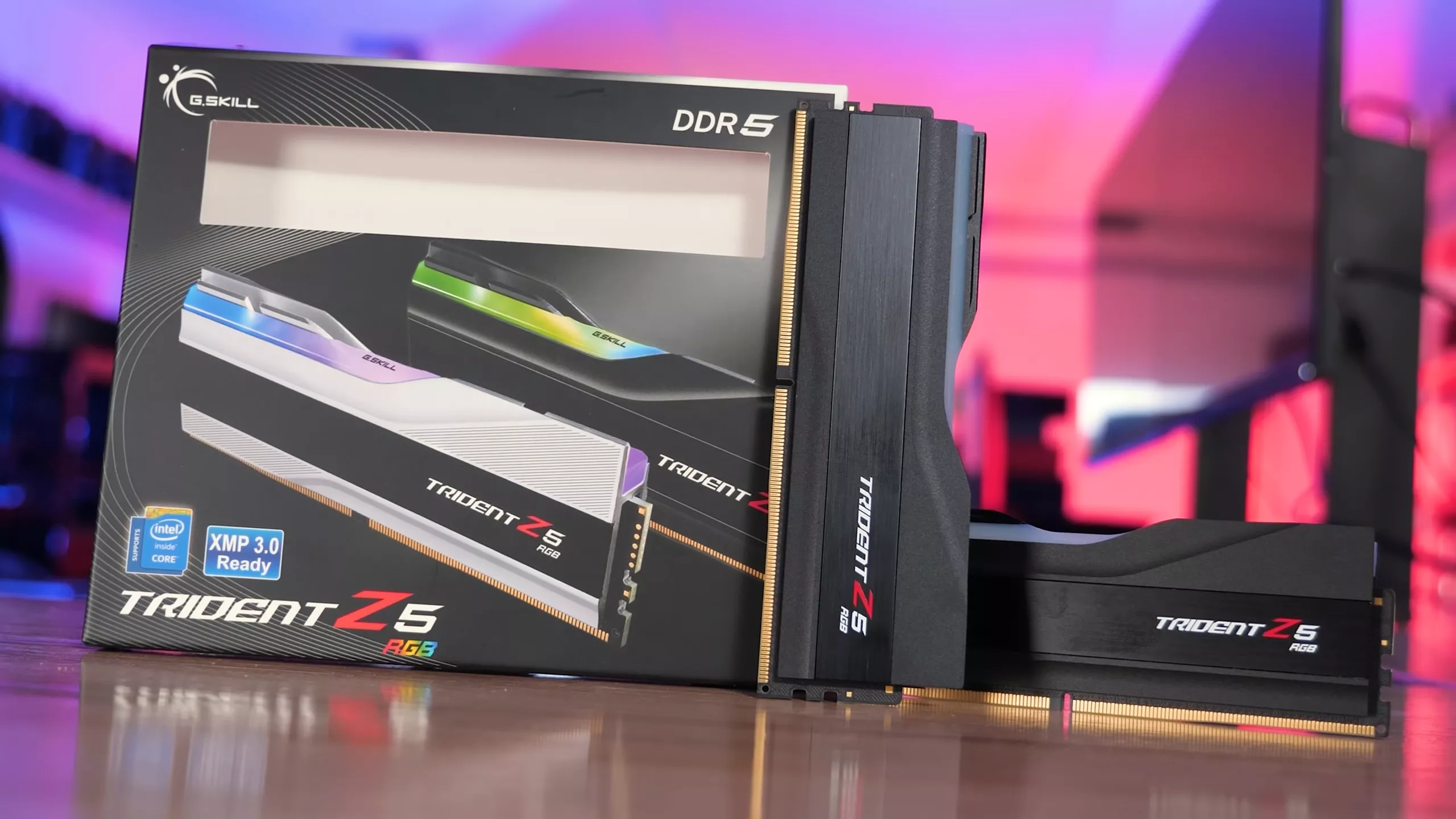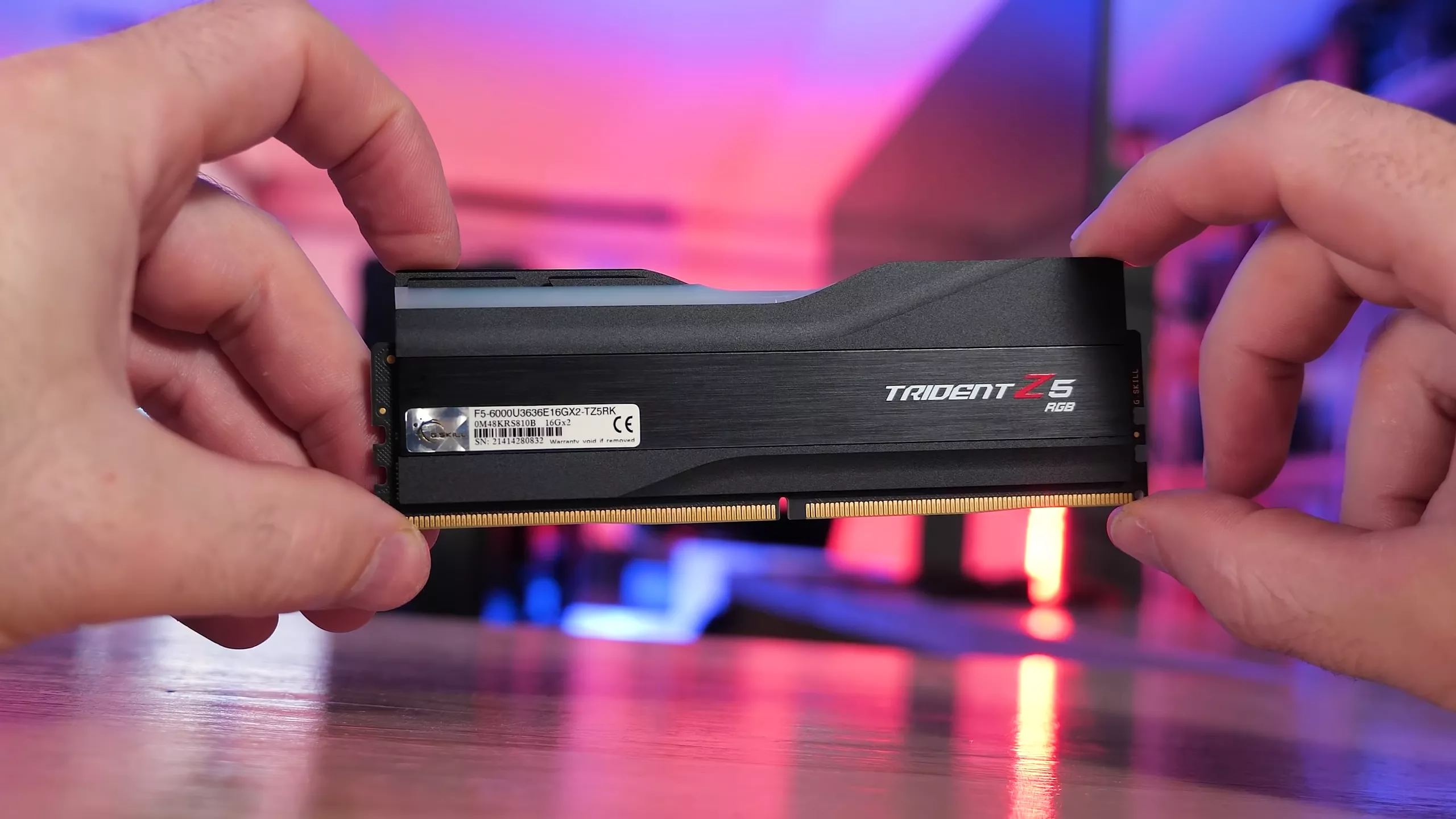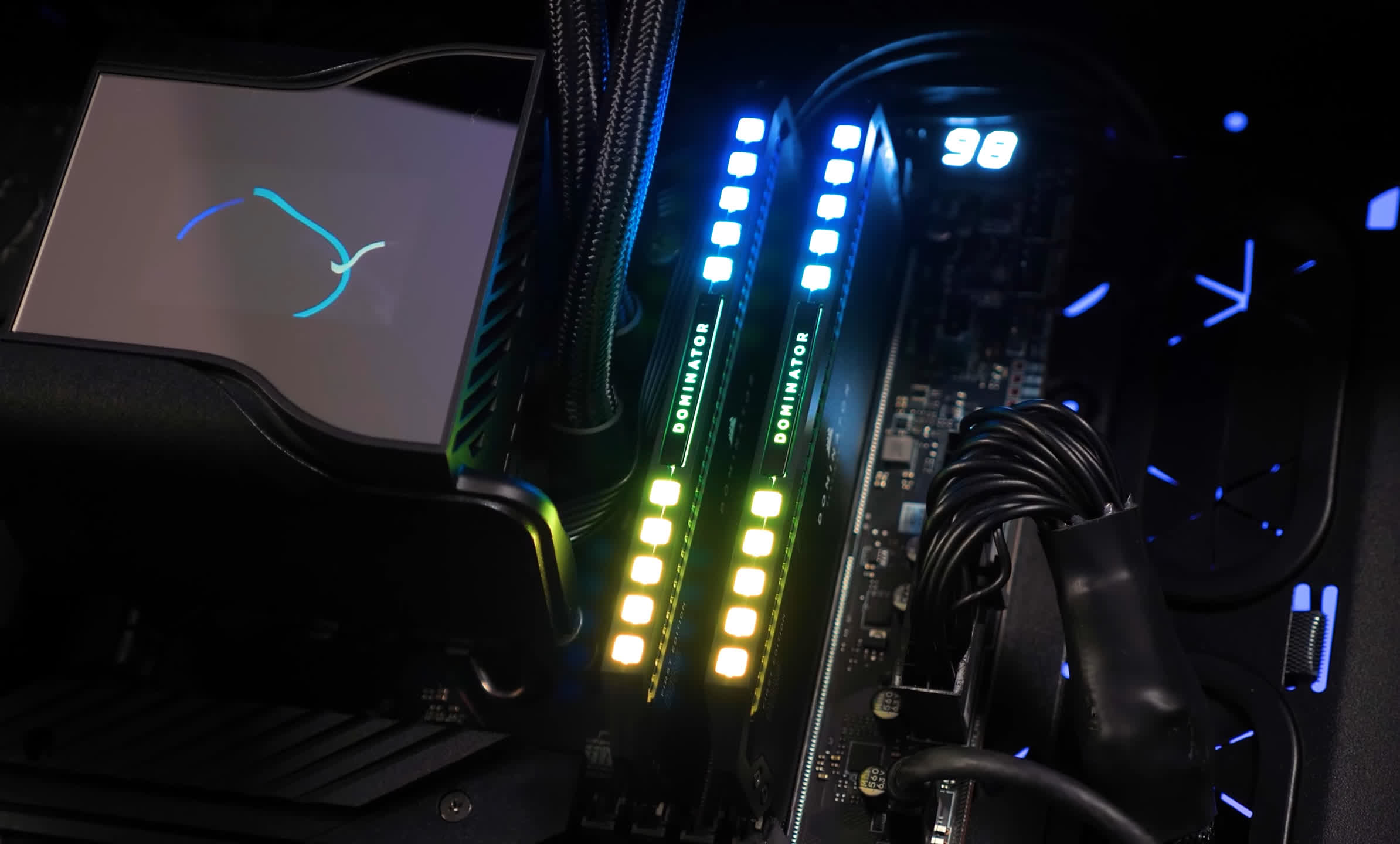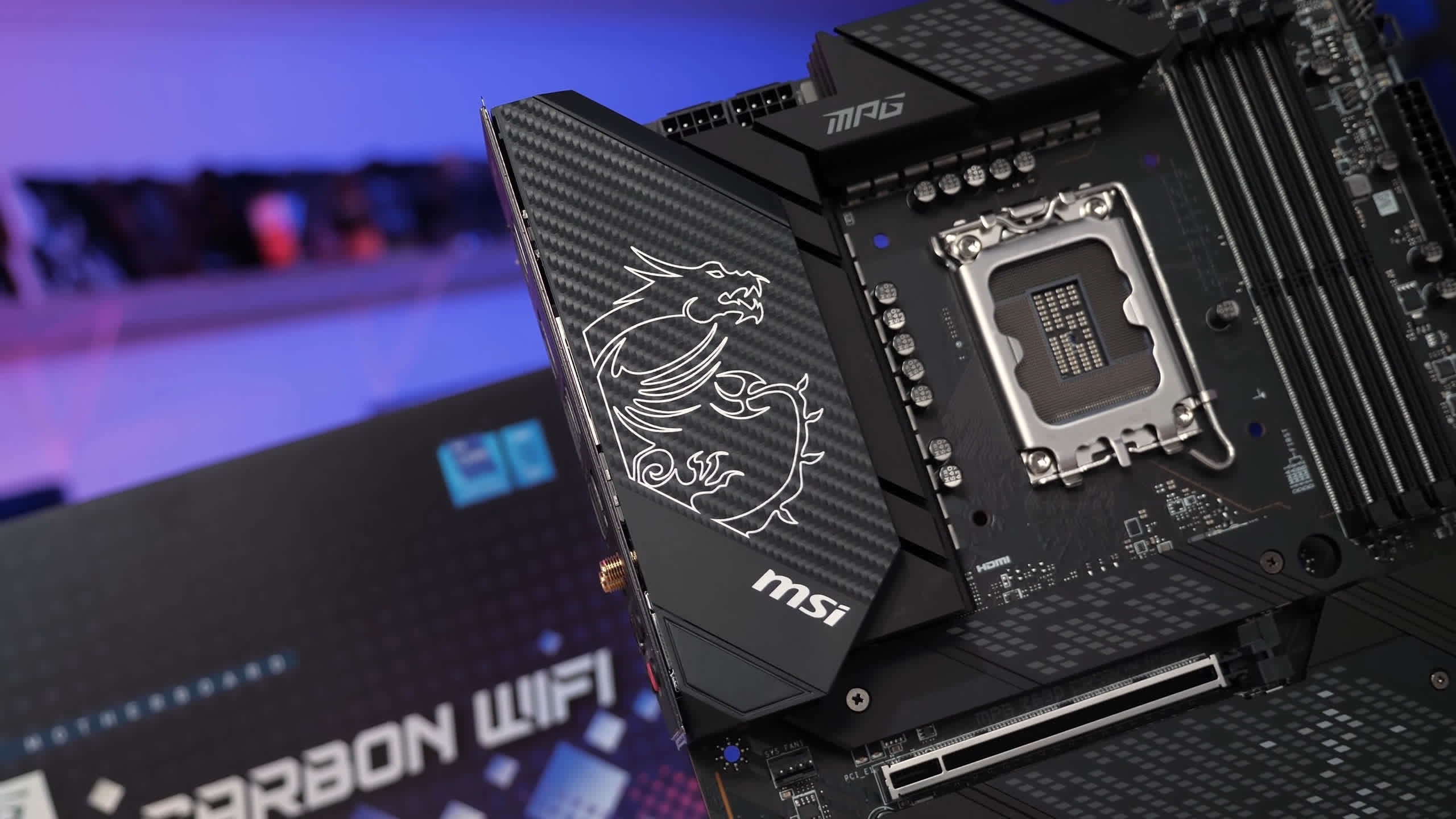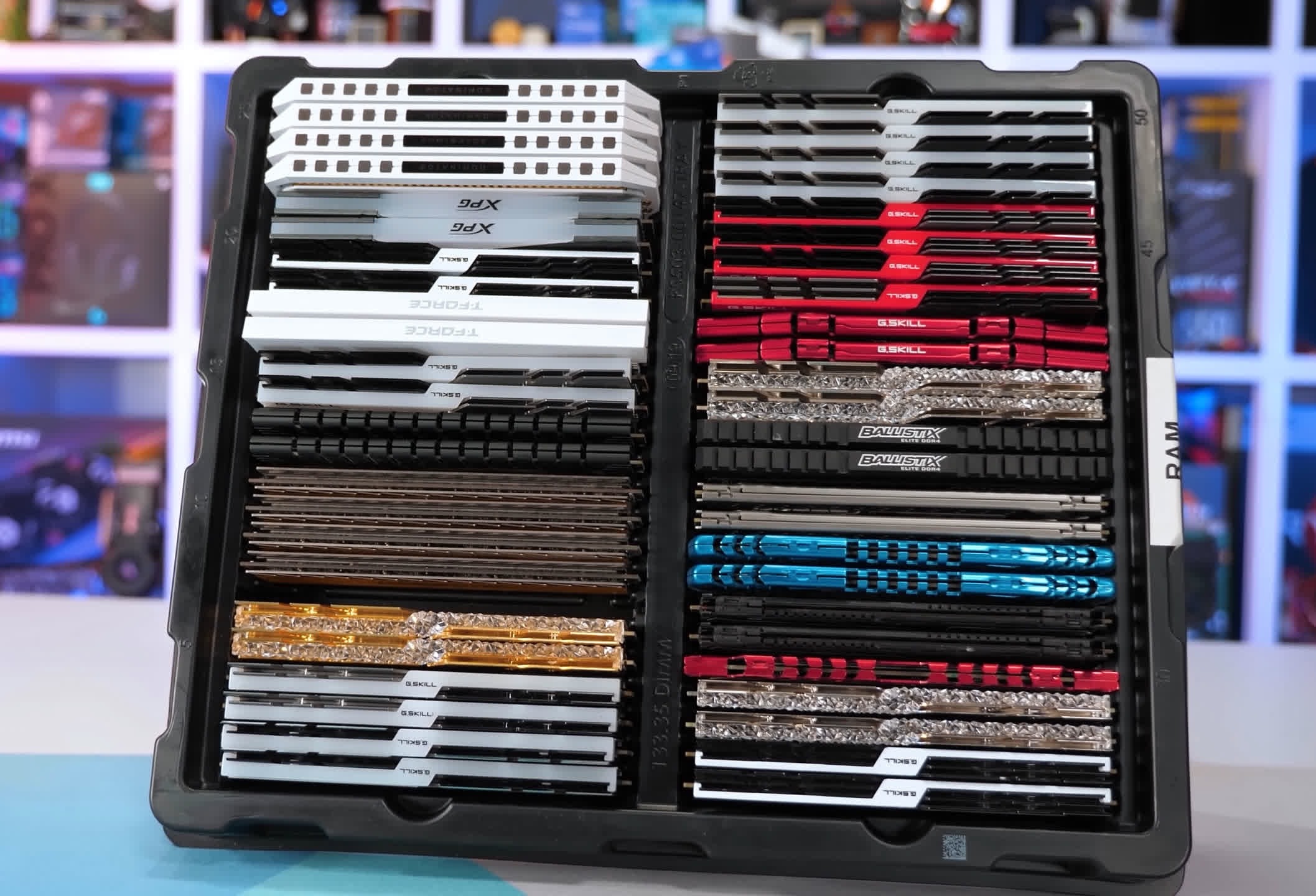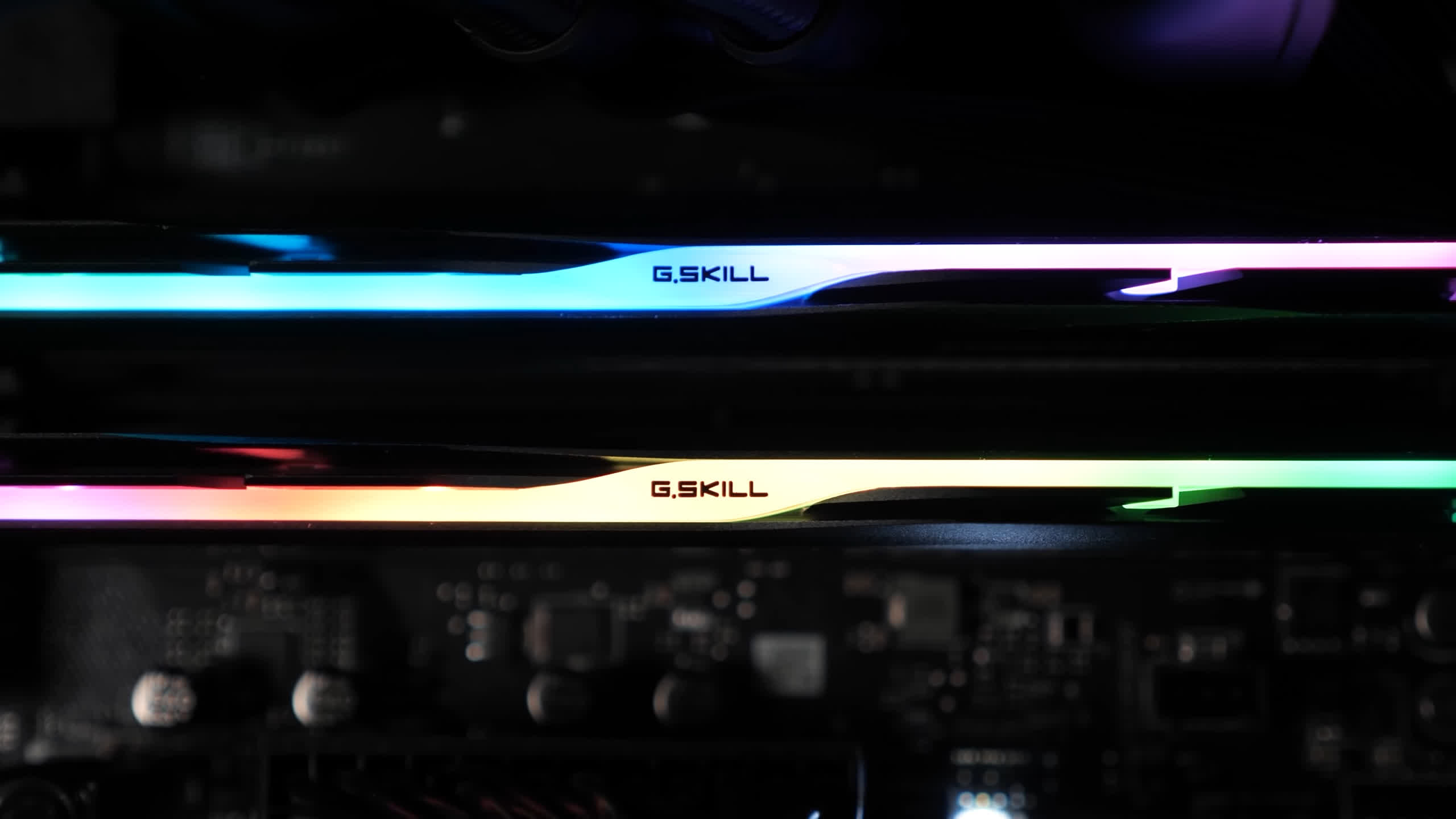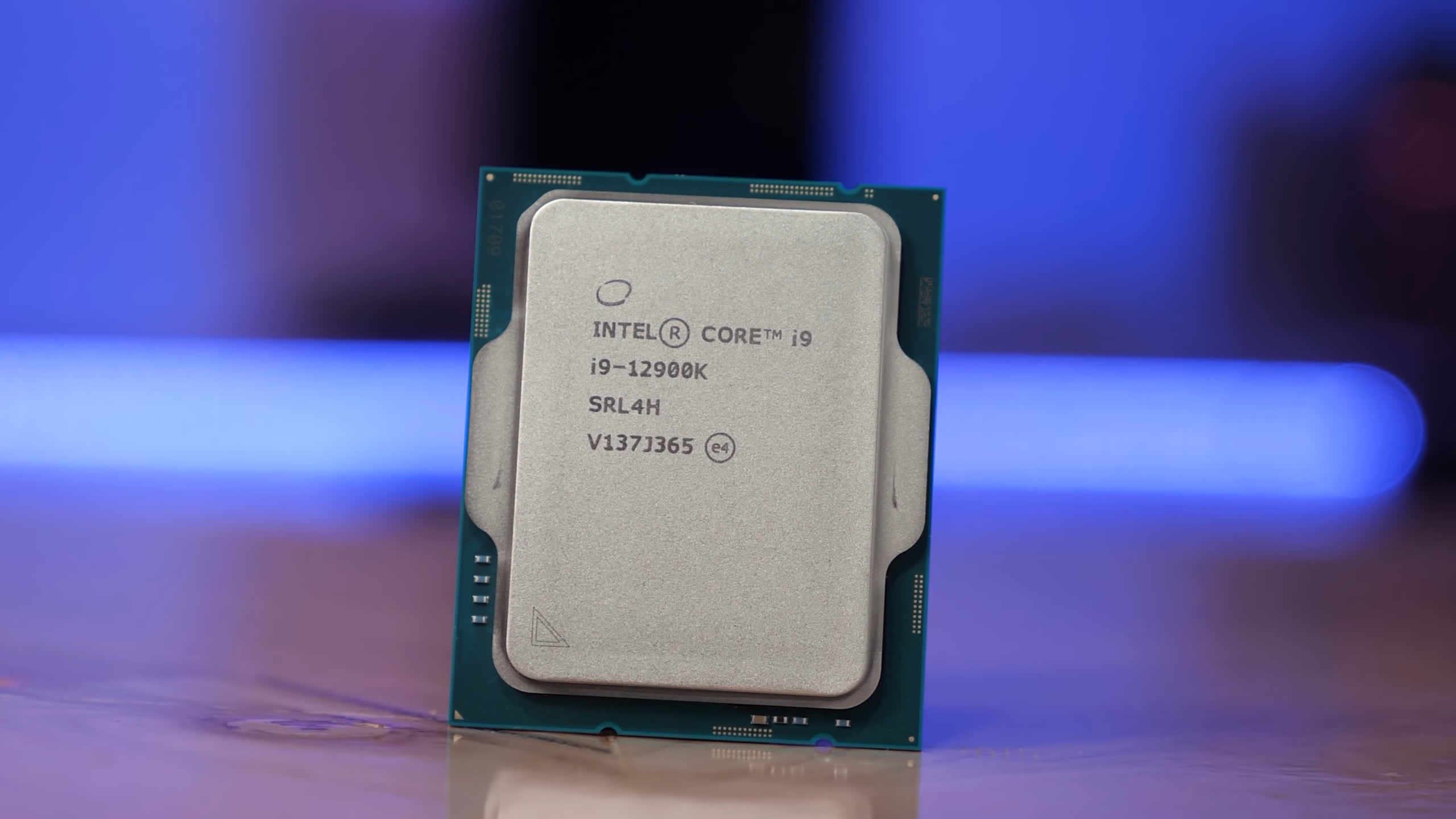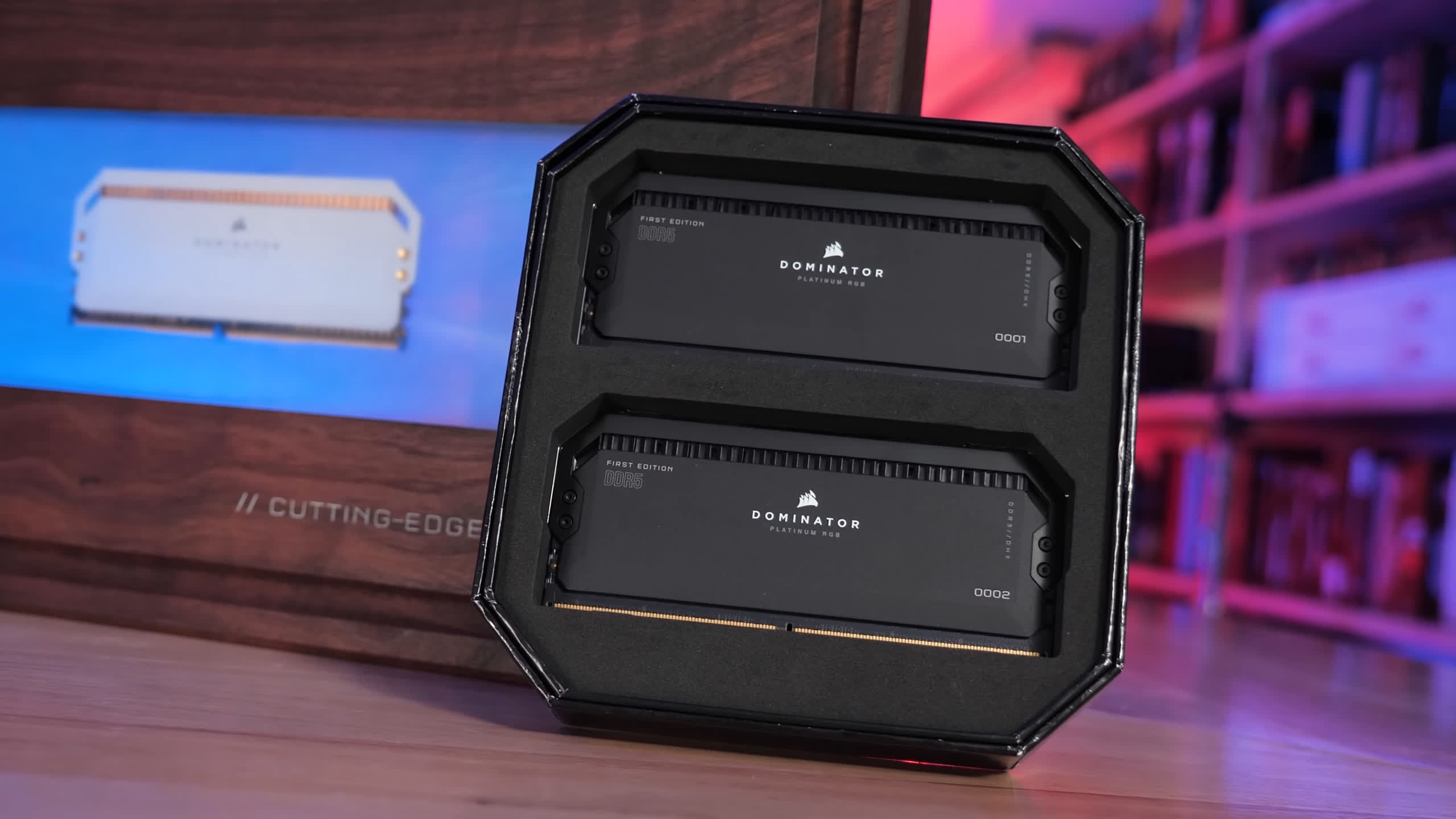A few weeks ago we reviewed Intel's new Alder Lake architecture for the first time and with it we also got our first chance to play around with DDR5 memory. In our Core i9-12900K review, we tested both DDR4 and DDR5 memory in a range of applications and games, to find that the faster, more expensive memory offered little extra performance for the most part, and this was particularly true for gamers.
A few titles did show nice performance gains, but overall performance was much the same, leaving us to recommend prospective 12th-gen owners to ignore DDR5 for now and stick with tried-and-true DDR4. When we published that review, which was prior to Alder Lake's release we had yet to see what DDR5 pricing and availability looked like, and were forced to comment based on feedback we had received from retailers and manufacturers.
They all told us DDR5 availability would be poor, and pricing would be extreme, and they were right...
As of writing, most PC retailers have no DDR5 memory in stock. The most affordable 32GB kit we can find is the Kingston Fury Beats DDR5-5200 CL40 memory for $560, which is pretty ordinary memory for that price. Over at Newegg, for example, they have stock of ADATA DDR5-4800 16GB CL40 sticks at $330 per module. Meanwhile, the cheapest memory listed is a Corsair Vengeance DDR5-4800 CL40 32GB kit for $310. The DDR5-6000 CL36 memory that we used for testing in our 12900K review (and will be using again today) costs $470 for a 32GB kit.
Based on pricing alone (and the fact that availability is near non-existent), DDR5 makes little sense for most.
But DDR5 supply is expected to improve next year, and so will pricing, so we wanted to take a more in-depth look at what DDR5 has to offer gamers when using an Alder Lake CPU, and this will help us determine at which point you should bother with the new memory technology.
In order to do this, we've benchmarked 41 games at 1080p, 1440p and 4K using the Radeon RX 6900 XT. For testing DDR4 memory we're using a G.Skill Trident Z Neo 3600 CL14 kit and for DDR5 memory the Trident Z5 RGB 6000 CL36 kit. The DDR4 memory was tested on the MSI Z690 Tomahawk Wi-Fi DDR4 and the DDR5 memory on the MSI Z690 Unify.
We've tested a massive amount of games, but we won't go over every title individually. We have picked around a dozen games and then we'll check out a complete breakdown that looks at margins in all titles tested.
Benchmarks
Starting with Assassin's Creed Valhalla, we see a 13% to 15% performance improvement with newer DDR5 memory, taking the average frame rate from 121 fps at 1080p, to 137 fps. But more impressive than that was the 17% performance boost seen at 1440p when looking at the 1% lows with a 12% boost to the average frame rate.
As expected, the margins close up at 4K where the GPU becomes the key limiting factor, but even so I was surprised to see a 9% boost to the 1% low and a 13% uplift for the average frame rate. So DDR5 is offering a clear performance advantage in Assassin's Creed Valhalla.
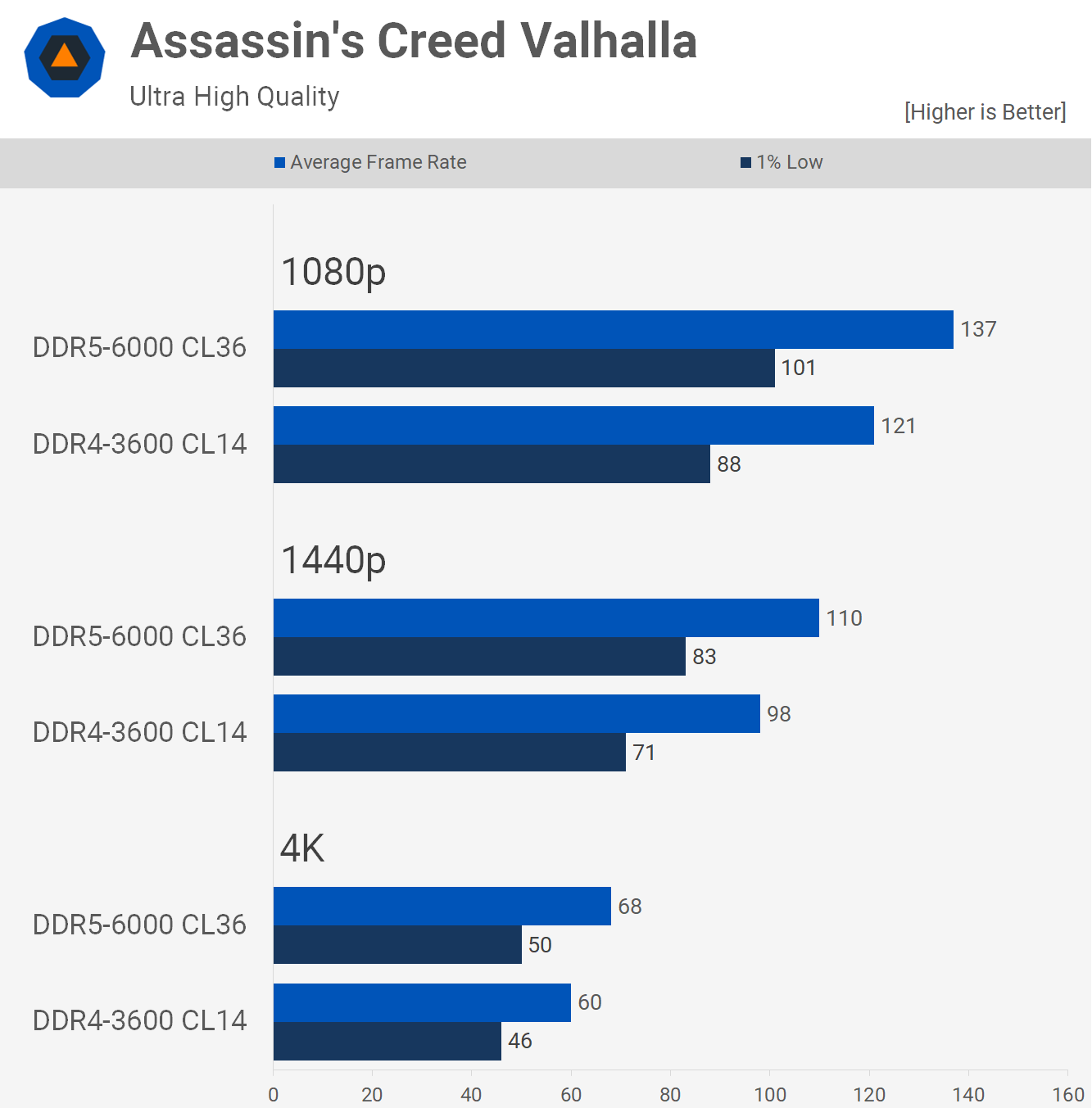
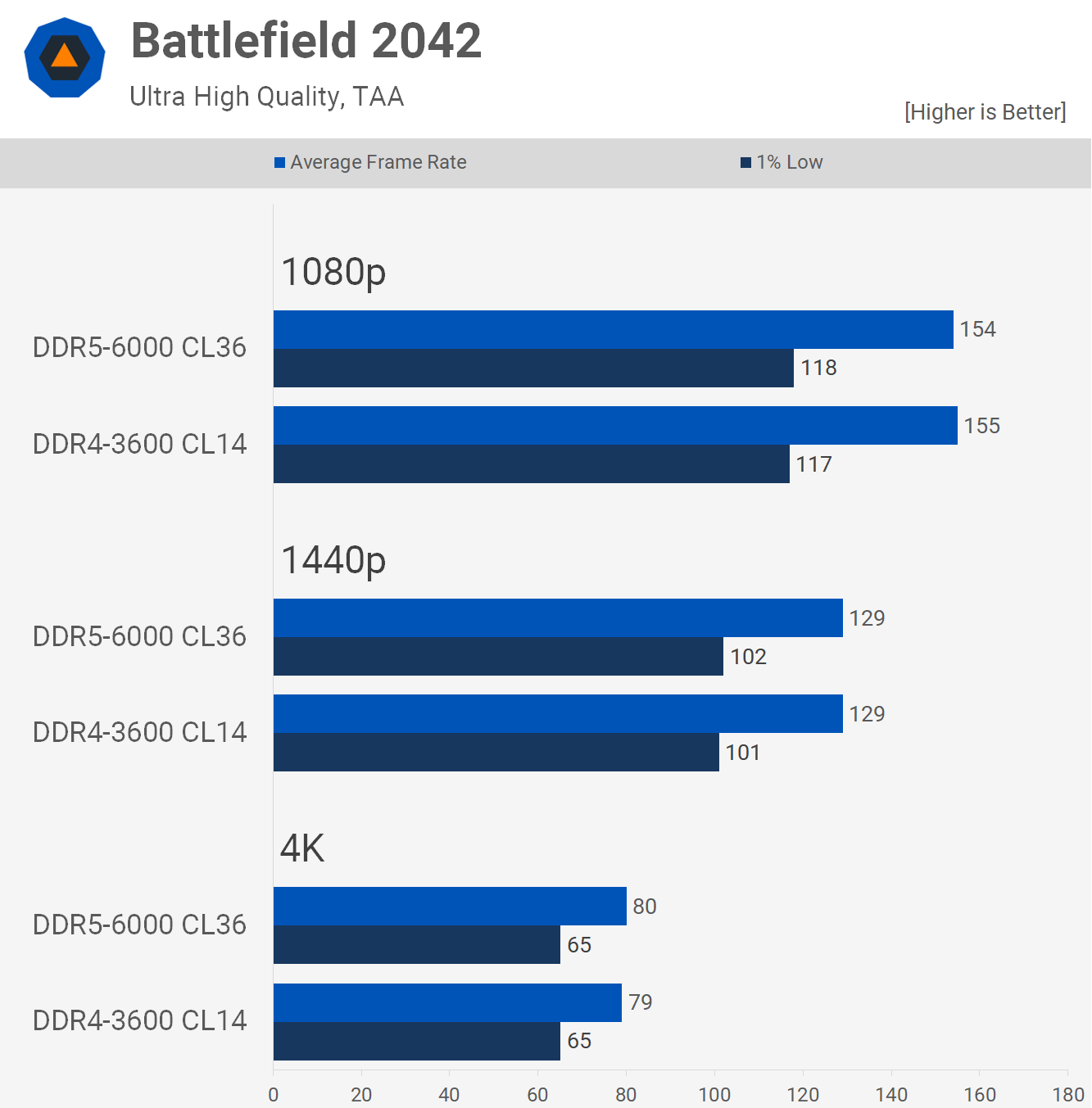
A game that doesn't benefit from the use of DDR5 memory is Battlefield 2042. Although this data is based on our easier to execute bot match, the 128 player modes don't see any improvement with the higher bandwidth DDR5 memory either. So this one is a bust for the ultra expensive DDR5 memory.

Call of Duty Vanguard is another game where we find a negligible difference between the two memory types, even at 1080p. So it would seem this game isn't limited by memory bandwidth.
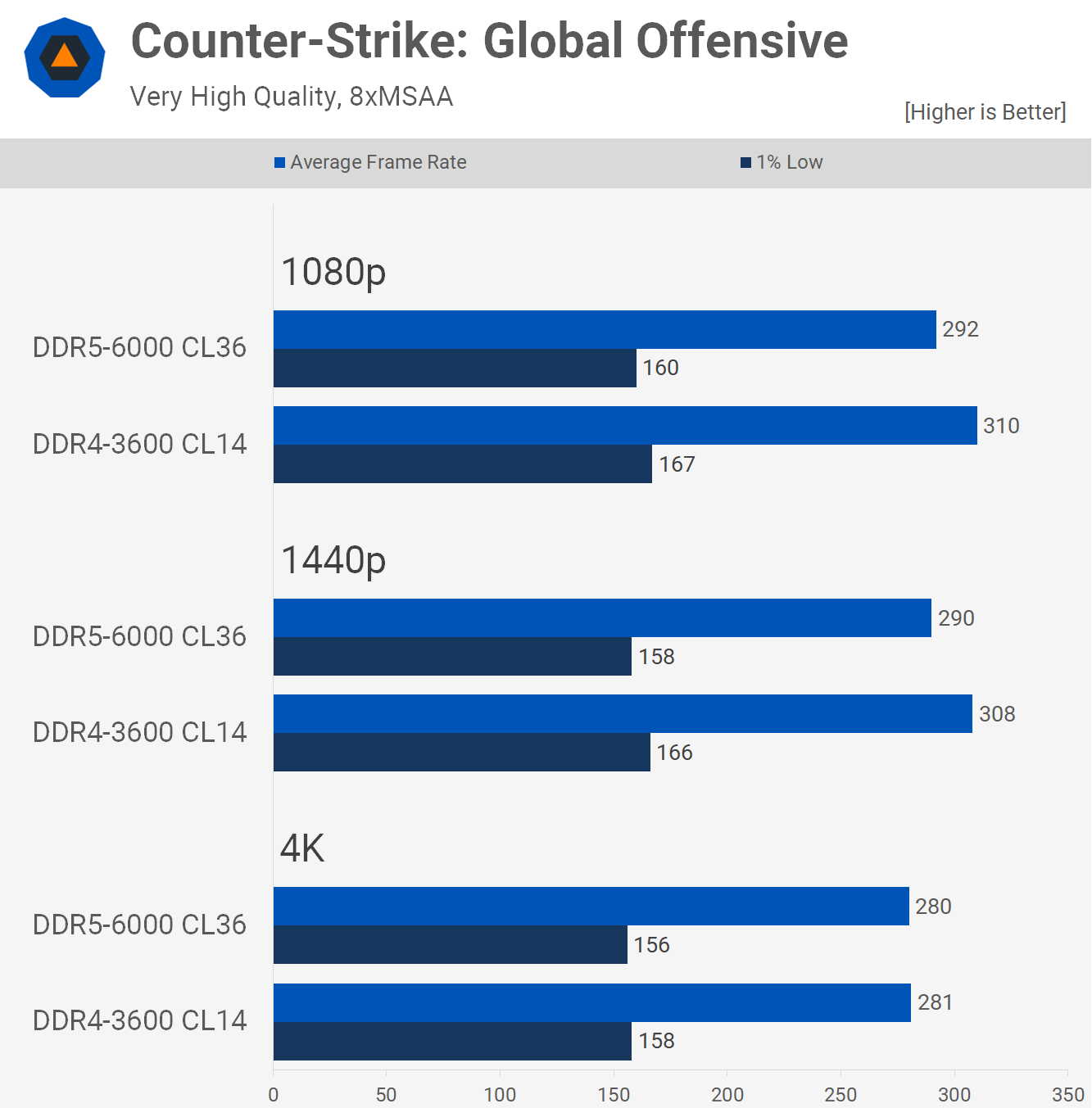
Counter Strike Global Offensive is a heavily CPU limited game, and here we see feeding the processor more bandwidth doesn't help improve performance at 1080p and 1440p, though we're only talking about a minor single-digit difference. But it appears as though lower latency memory is more important for this title.
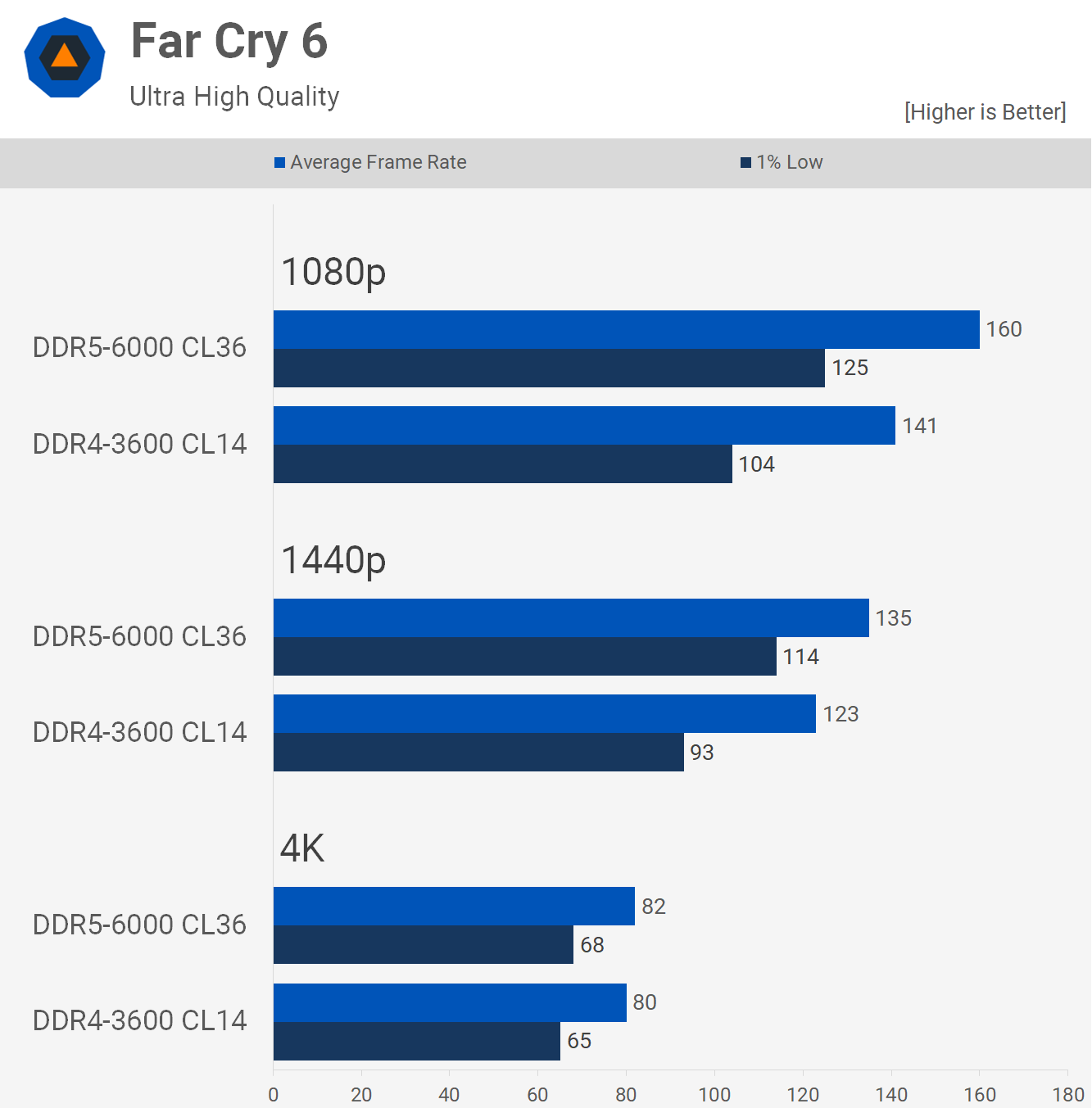
Interestingly, Far Cry 6 benefits massively from higher memory bandwidth and that's not because the VRAM buffer has been exceeded as we're using a 16GB card. Rather, this game dips into the system memory quite heavily and as a result we're seeing up to 22% greater performance at 1440p when looking at the 1% lows.
Even the average frame rate was boosted by 10% and 13% at 1080p. The margins are neutralized at the GPU-limited 4K resolution, but still some impressive gains at 1080p and 1440p in this title.
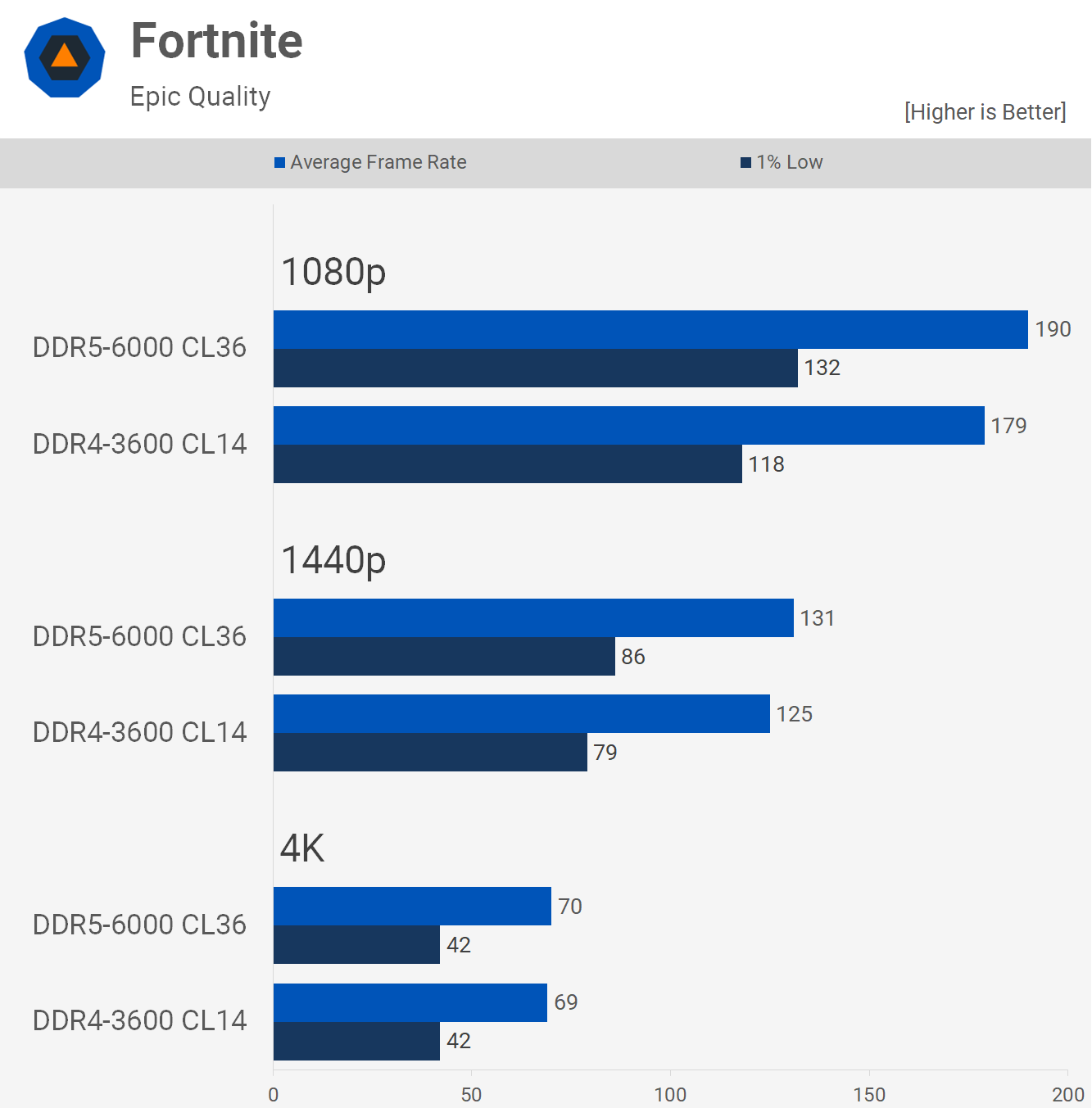
Fortnite also saw some benefit to using DDR5 memory, though for the most part the margins were less impressive. We did see a 12% boost to the 1% lows at 1080p, with a 6% improvement for the average frame rate and this was reduced to 5% at 1440p and then nothing at 4K.
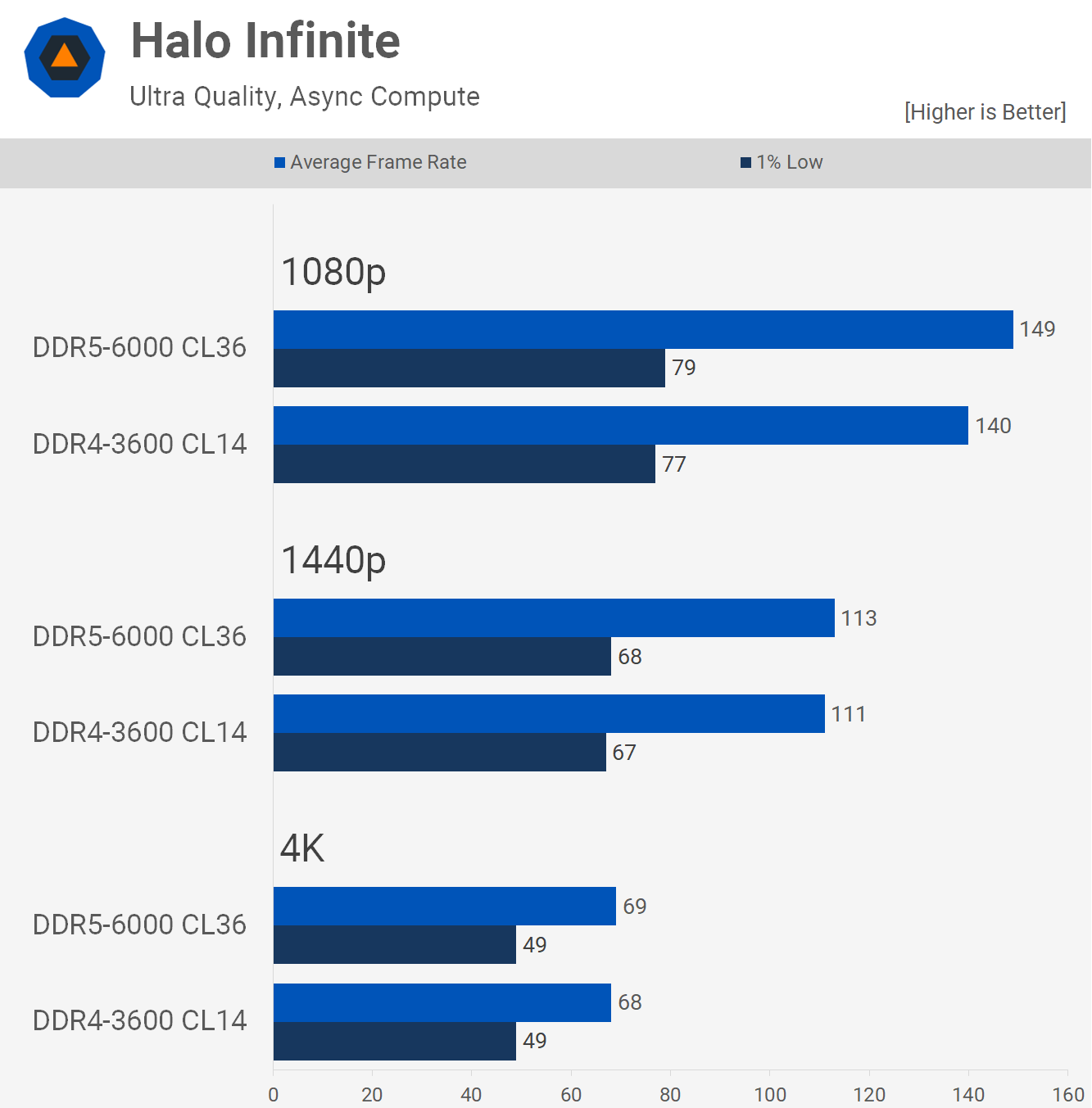
Next we have Halo Infinite and I played a bit further into this one and sadly I can't get back to our demanding test included in our Halo Infinite GPU benchmark, so it looks like I'll have to start over and play for a few hours to get back to that scene.
For now, we have this less demanding part of the game and here DDR5 offers very little over DDR4, though I suspect this will also be true for more demanding scenes as well.
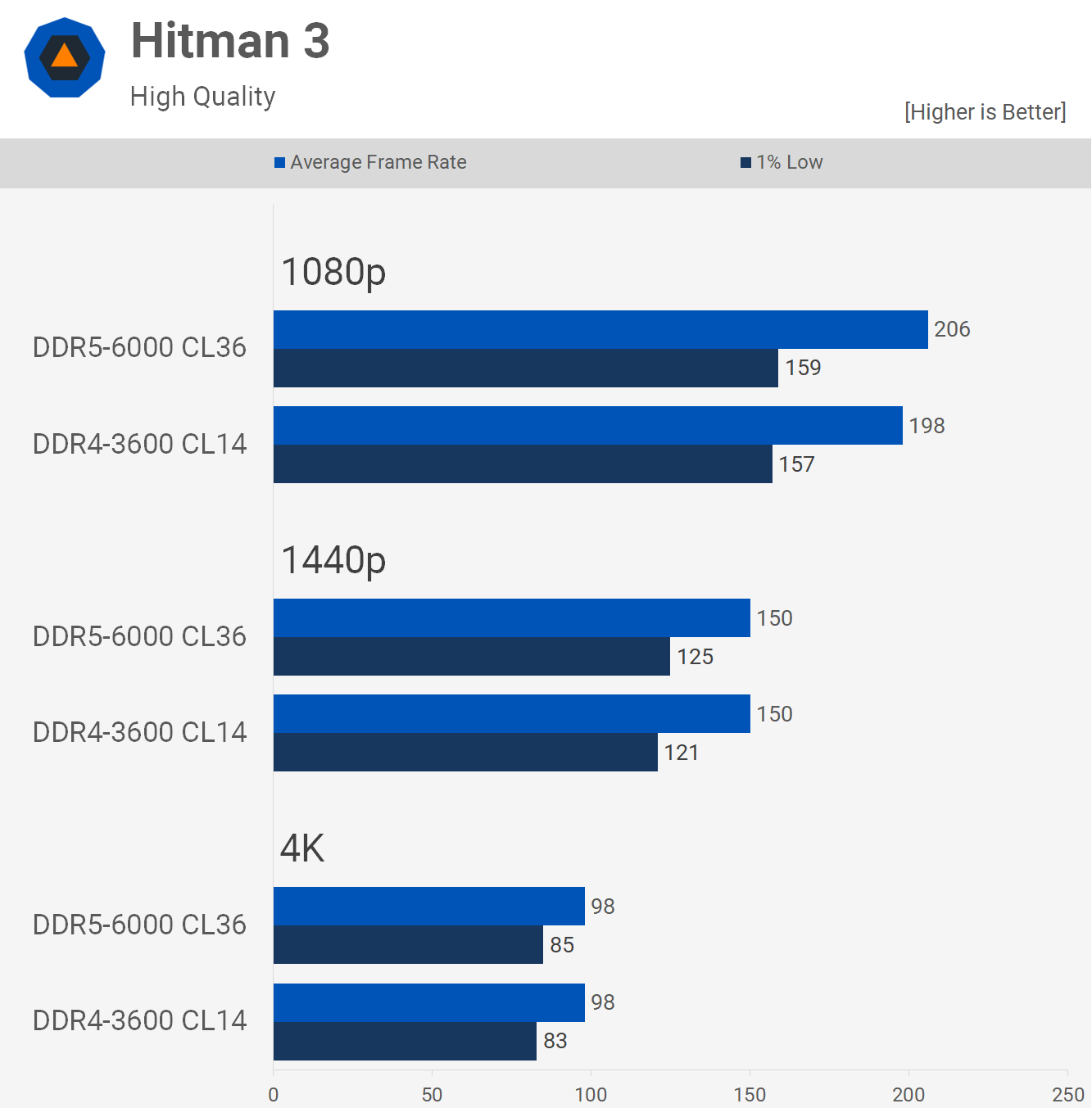
Performance in Hitman 3 gains next to nothing when using DDR5, we see only a very minor increase at 1080p, with basically nothing at 1440p and 4K.

For testing Microsoft Flight Simulator I'm using the latest DirectX 12 version and here we're only seeing mild gains in the range of low single-digit percentages, so nothing to get excited about.

Testing PUGB shows a small improvement to the 1% lows with DDR5, about 5 - 7% so nothing to write home about. Meanwhile, the average frame rate remained much the same, so either memory technology will allow you to squeeze the most out of an Alder Lake CPU in this game.

The Riftbreaker is a base-building, survival game with Action-RPG elements, and what makes it particularly useful for our testing is that it heavily utilizes the CPU. Riftbreaker utilizes core-heavy processors well and with thousands of units in-game it's a very heavy workload.
Here we see that the higher bandwidth DDR5 memory has boosted performance at 1080p by 15% and the same is also seen at 1440p when looking at the 1% lows. Even at 4K we're seeing a small 6% boost to 1% lows with the newer memory.

StarCraft II is another CPU intensive game, but for all the wrong reasons. This old title only utilizes a single core heavily, but we see there is some benefit to feeding that core more bandwidth as performance was boosted by 7%, almost across the board.

Finally, we take a look at War Thunder and here we're seeing pretty impressive performance gains at 1080p, though how useful a 24% performance boost is when you're already over 200 fps is hard to argue about. Still, even at 4K we're looking at up to a 9% performance boost.
Taking the Average
In total we spent a few weeks testing 41 games and we'll take a look at the side-by-side comparison across all those games in a second. But if we look at an average graph, calculated using the geomean, we see that on average DDR5 memory offered just a 3% boost at 1080p, 2% at 1440p and then one percent at 4K.
Based on those figures, DDR5 does very little to aid the Core i9-12900K across a wide range of today's games.
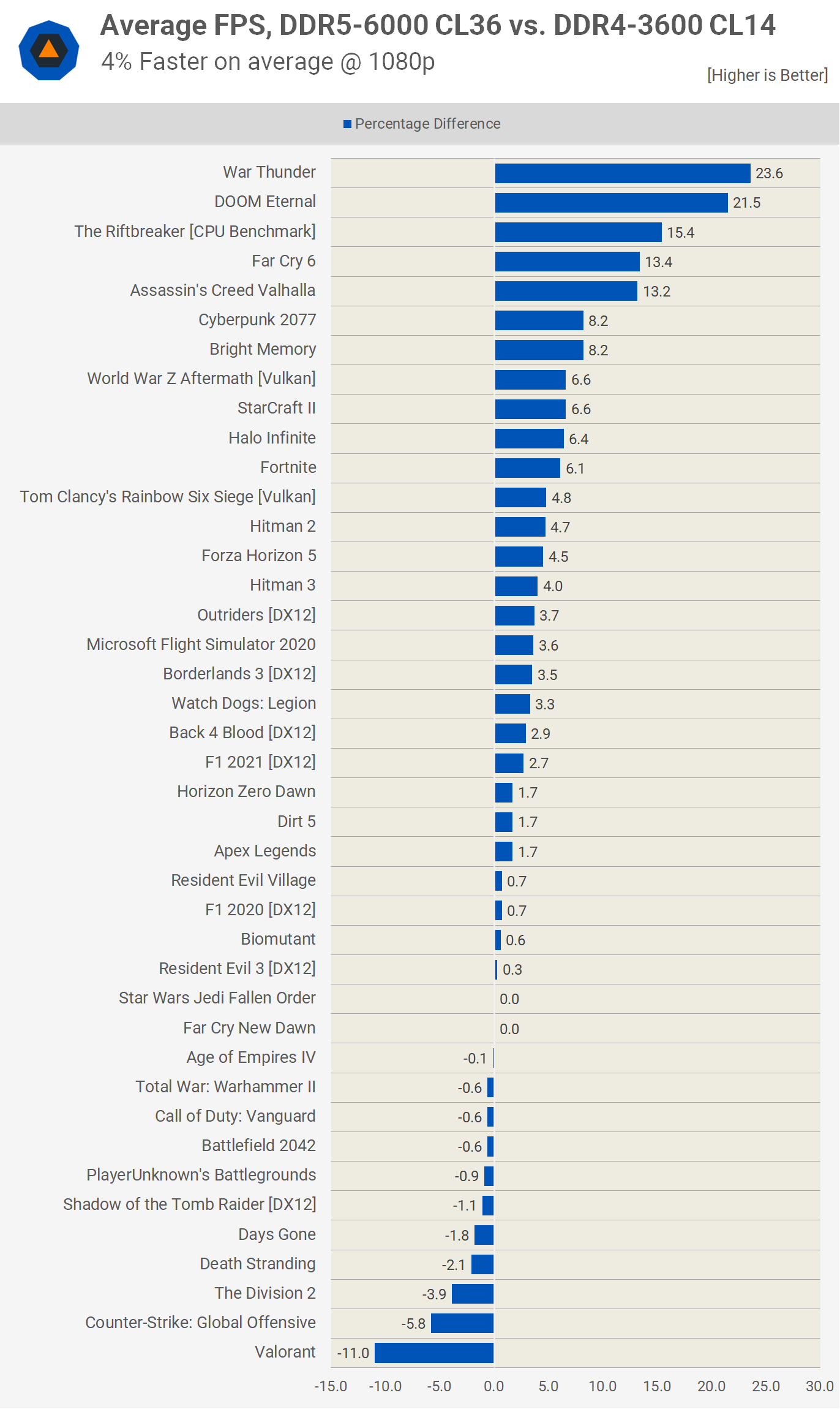
41 Game Breakdown
Now here's a look at the individual results for all 41 games, focusing on the 1% lows.
As we just saw, DDR5 offers a 3% performance boost overall, but here we can see that gains were as large as 20% in games such as Far Cry 6 and Bright Memory. Other games to show strong gains include Watch Dogs Legion, Assassin's Creed Valhalla, The Riftbreaker, and Fortnite, to name a few.
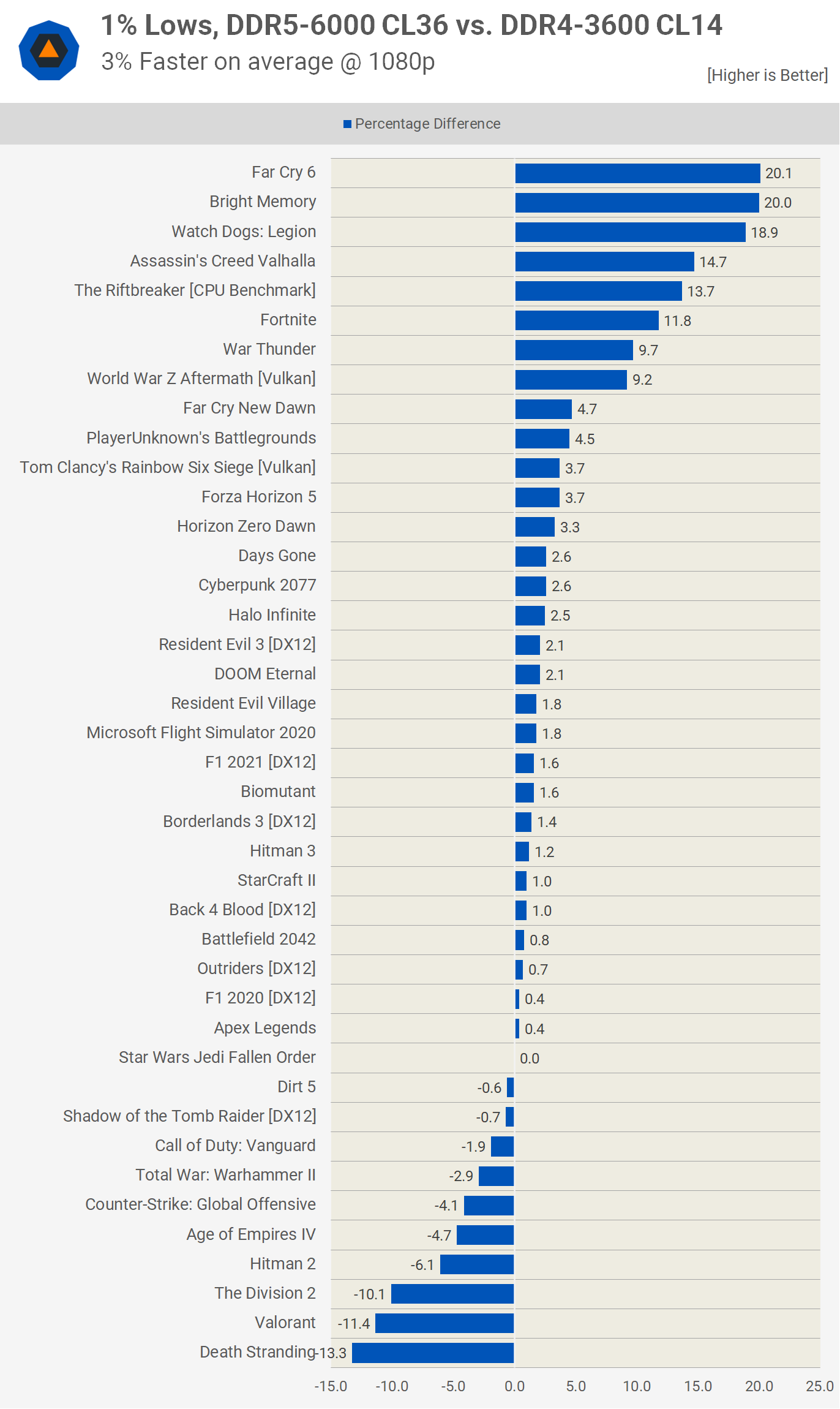
There were also games that ran slower with DDR5, by a 5% margin or greater, such as Age of Empires, Hitman 2, The Division 2, Valorant and Death Stranding.
Moreover, of the 41 games tested, 26 of them saw 4% or less variation in performance, which is basically nothing and gameplay is identical. So for over 60% of the games tested performance was a match. It's also worth noting that for 75% of the games tested, DDR5-6000 memory failed to offer over a 5% improvement.
For those of you wanting to see the average fps data, here's a look at that...

The data does move around a bit. For example, War Thunder is now showing the best results for DDR5, along with Doom Eternal. But overall we're looking at very similar performance trends.
Bottom Line
Depending on the games you play, DDR5 memory can offer little to no performance gain, and this will be true for most titles. The best performing examples show up to a 20% boost which is significant, and here we're comparing premium DDR4-3600 memory to premium DDR5-6000, with the DDR5 kit coming in at a ~70% price premium.
Clearly DDR5 isn't worth it right now, but we already knew that. Pricing aside, DDR5 has little to offer over DDR4 in today's games with an Alder Lake processor for the most part. That being the case, budget conscious shoppers should only consider DDR5 at a 10%, or maybe a 20% price premium at most, when going for a flagship part like the Core i9-12900K.
The value equation is considerably worse for DDR5 when comparing sweet spot memory like DDR4-3600 CL16, for example. The G.Skill Ripjaws V Series 32GB can be had for just $135 and that's for the 32GB capacity kit. Meanwhile, the cheapest DDR5 32GB kit listed on Newegg right now is Corsair's Vengeance for $310 and it's out of stock. That's a 130% price premium when comparing with sweet spot DDR4 memory, yikes.
It should also be noted that for the vast majority of games you can still easily get away with 16GB of RAM, especially if you're a good lobster and keep your OS clean. It's very easy to snap up a DDR4-3600 CL16 16GB kit for well under $100, the Ripjaws V, for example is just $80.
It should also be noted that for the vast majority of games you can still easily get away with 16GB of RAM.
We can also address the "future-proofing" argument, which came up a lot on our initial Alder Lake reviews. The basic argument is this: invest in DDR5 now, so you don't have to change your motherboard later if you want to upgrade to 13th-gen Core (codenamed Raptor Lake).
But wait... Raptor Lake will support DDR4 memory, and while it's possible DDR5 will be of more benefit in a year, it's still not going to be massive and gamers will almost always end up GPU limited in games, rather than CPU limited. The big issue with this future-proof argument is the same as before, they hinge on the investment paying off in the long run with very few short-term advantages.
In the case of this argument, let's take a rather expensive mid-range motherboard such as the Gigabyte Aorus Elite AX. It's $270 for the DDR4 version or $290 for the DDR5 version, so already you're paying a 7% premium for the DDR5 motherboard. As seen earlier, a sensible 32GB DDR4-3600 CL16 kit will cost you $135, so that's $270 for the motherboard, $135 for the memory, and let's go crazy with the Core i9-12900K for $620 = a $1,025 combo.
Now, if we went with the cheapest DDR5 memory we can find at Newegg, the Corsair Vengeance DDR5-4800 CL40 32GB kit for $310, add the $290 Aorus Elite AX DDR5 with the Core i9-12900K, and you have a package cost of $1,240, roughly a 20% premium overall.
The problem is, I expect DDR5-4800 CL40 memory to be slower than DDR4-3600 CL16, so what's the point of paying a 20% premium for slower memory?
If we recalculate using the memory tested here, the Trident Z RGB, DDR4-3600 CL14 and DDR5-6000 CL36 we find a similar margin using the Core i9-12900K and Aorus Elite AX, basically DDR5 ends up costing 20% more.
DDR5 available right now is going to be terrible when compared to DDR5 memory in a year or two...
You could argue that a 20% premium is worth it given we're already seeing examples of 20% gains in games. But you're better off saving the money for a future upgrade because the DDR5 available right now is going to be terrible when compared to DDR5 memory in a year or two. We saw the same thing happen with DDR4, and DDR3 before it.
As we explained in our first Alder Lake review, you can make a reasonable case for DDR5 with the Core i9-12900K, given it's such an expensive CPU. But our advice for gamers is to go with the much better value Core i7-12700KF for just $395 – and at that point the DDR5 package is 25% more expensive – and then almost 30% more with the 12600K.
For budget-conscious gamers looking to jump on Alder Lake with a Core i5 or i7, my advice is to snap up an entry-level Z690 motherboard such as the Gigabyte Z690 UD DDR4 for $200 or the MSI Z690-A Pro DDR4 for $220 and pair that with an affordable DDR4 kit such as the Ripjaws V for $135.
If Raptor Lake does end up being a big step forward and worth upgrading to, you'd be best off just buying a new Z790 motherboard with DDR5 memory and selling the DDR4 gear second hand as it will retain its value well, Intel motherboards always do due to heavy product segmentation. At that point you should be getting a better motherboard anyway and much higher quality DDR5 memory at a significantly better price.
Also, chances are 12th-gen Core series owners won't feel the need to upgrade until 14th-gen hits at the absolute earliest, and at that point you'd need a new motherboard anyway.
Now that we've compared DDR4 and DDR5 memory across a massive range of games, the next step is to provide a detailed memory scaling video for Alder Lake and that's already in the works. The plan is to compare a wide range of DDR4 and DDR5 memory to find the sweet spot for Intel 12th-gen series, in both games and applications. Stay tuned for that.
Shopping Shortcuts
- G.Skill Trident Z Neo DDR4-3600 CL14 on Amazon
- G.Skill Trident Z5 RGB DDR5-5600 CL36 on Amazon
- Corsair Vengeance RGB Pro DDR4-3200 CL16 on Amazon
- Corsair Vengeance DDR5-4800 on Amazon
- Kingston Fury Renegade DDR4 CL18 on Amazon
- Intel Core i5-12600K on Amazon
- Intel Core i7-12700K on Amazon
- Intel Core i9-12900K on Amazon
Further Testing
Since we published this review, we have run additional benchmarks and comparisons you may be interested in:
